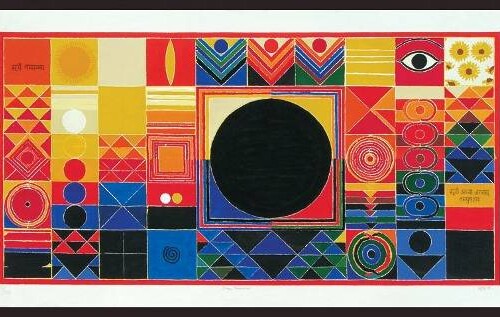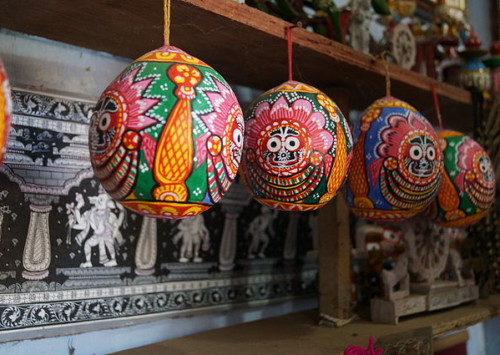Patachitra: Ancient scroll painting of Bengal
The vibrant and expressive folk art by the patua community from West Bengal is a truly colourful one, which is being sustained in times of change.
The patua scroll painting from eastern India, sometimes also called patachitra scroll painting, is a delightful traditional art which takes on a performative nature. Combining art and narrative through song, patachitra from West Bengal has its unique features, though similar traditions can be found in a few other places concentrated around the state, in states such as Bihar and Odisha. Approximated to be dating back to 13th century, this art form has reflected topics far and wide, from myths to current social issues. In times of change, with various initiatives, the practitioners of this pictorial narrative art have also diversified themselves to sustain.
Patua art of West Bengal. pic.twitter.com/5xynBBwxwp
— दर्श (@mazadohta) May 28, 2015
In a village in West Midnapore district in West Bengal, around 250 patuas or painters can be found keeping this tradition alive. More than just painters, patuas are also lyricists, singers, performers and true artists. This form of performative scroll painting can also be found in other districts of West Bengal, yet, this village can be considered a cluster of artists. Vibrant colours made from natural products such as vegetables and turmeric are used in making frames or paintings, which are joined together to make the scroll. Themes that define the painting vary from oral traditions of folk tales, mythological texts and scenes, sociological topics of interest as well as political happenings. Whether tales of Radha-Krishna (Hindu deities) or commentaries on the French Revolution, patua scroll painting-performance is a fascinating affair.
Extraordinary Patua artists in West Bengal paint and sing about politics and social issues, including the events of 9/11 here pic.twitter.com/8FOOArpYH4
— Sarah Moser (@SarahKMoser) December 12, 2016
Once the scroll is prepared, varying from 5 to 15 feet in width and 3 to 15 feet or more in length, often it is glued to something like a saree for ease of unravelling and storing. The traditional form has inspired many offshoot styles yet the performative oral tradition, synthesised with vibrant visual depictions of storytelling, is truly unique. To keep up with times, the patua painters are also taking to decorating handicrafts, household items and textiles for sustaining a living. Many patua painters have also now taken to painting only, rather than storytelling through singing, in an effort to sustain themselves economically.
Tradition in changing times
Even as performing arts and folk traditions remain invaluable intangible cultural heritage of communities all across, many are diminishing owing to rapid changes in the socio-cultural fabric of the world. Safeguarding efforts by local governments, international bodies such as UNESCO and various non-governmental organisations can go a long way in keeping alive traditions through time.
The patua community in West Bengal has come under such initiatives by the Government of West Bengal, and NGO Banglanatak.com, which has also collaborated with bodies from the European Union in the past. Projects like Ethnomagic Going Global a few years ago and the government’s push to gain Geographical Indication tag for many rural crafts and arts, including patachitra paintings, gives hope to keep this lively folk tradition alive. The curious and enthusiastic lovers of art now await the Pot Maya, held annually since 2010 in the month of November, in the Naya village, a festive gathering where the ancient folk art performance enthrals all.
Great performance of West Bengal Patachitra narrative visual @banglanatak today in Museum of Edinburgh #FOM2016 pic.twitter.com/ZePEgSYHym
— Joanne Orr (@JoanneMGS) May 13, 2016












